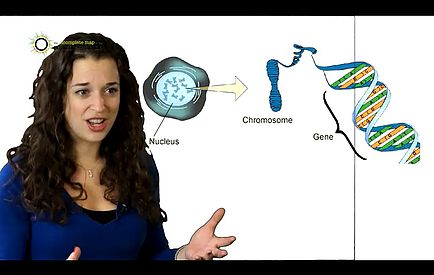 By Dr Emily Grossman, molecular biologist, broadcaster and educator, who trains contestants for the FameLab International science communication competition. Dr Grossman is running a Science Communication Workshop at the Royal Society of Biology on Monday 18th April.
By Dr Emily Grossman, molecular biologist, broadcaster and educator, who trains contestants for the FameLab International science communication competition. Dr Grossman is running a Science Communication Workshop at the Royal Society of Biology on Monday 18th April.
When trying to explain complex information to an audience, the first task is to get the content right. But how we communicate is also crucial. When someone is speaking, most of the information we receive comes through their body language, enthusiasm and tone of voice. It’s our overall experience of the speaker that counts.
The more complex the information, the more important this is. Imagine trying to explain your latest scientific discovery in a flat, monotone voice. If you don’t sound excited, the listener won’t feel excited either. They will find it harder to engage with the information, and, crucially, it will be more of a challenge for them to understand it.
If you look alert but relaxed, your audience will mirror this and feel the same way. Stand up straight, but relax any tension or stiffness in your body. It’s a good idea to gesture with your hands in such a way that helps to make clear what you are explaining – but only do this if it feels natural, and try not to wave your arms around unnecessarily!
The best presenters do not try to emulate anyone else; they are simply a bigger version of themselves. It is important to celebrate your own uniqueness and use your own way of communicating. Think about how you would tell your friends an exciting thing that happened to you today, and what gestures you would naturally use.
Pacing or moving around as you talk can sometimes add to the excitement of the story, but it can also be distracting. Always try and work out if the way in which you are moving is in keeping with the emotion or content you are trying to get across. Also check to see if there are any things you are doing that are distracting or give away your nerves. Fidgeting, fiddling, shifting your weight, swaying or playing with a pen are classic examples of this.
 One of the most important areas of body language is eye contact. This can really help an audience feel immersed in the story, but can also help you, as a presenter, to feel less nervous. A few seconds of eye contact with individual audience members will actually help to calm your nerves. This will feel a lot longer than is initially comfortable, but try to allow it to feel like you’re engaging with just that person for a good few seconds before moving on, and try to make sure you include everyone in the room.
One of the most important areas of body language is eye contact. This can really help an audience feel immersed in the story, but can also help you, as a presenter, to feel less nervous. A few seconds of eye contact with individual audience members will actually help to calm your nerves. This will feel a lot longer than is initially comfortable, but try to allow it to feel like you’re engaging with just that person for a good few seconds before moving on, and try to make sure you include everyone in the room.
In terms of content, they say that a picture paints a thousand words, and that’s equally true for the images we create through words. If you can get an audience to really ‘see’ what you’re trying to explain, they will not only be able to understand it better, but they will also remember it. Analogies and metaphors work really well. A good metaphor for a complex topic will stay in people’s minds forever.
Try not to use technical language. If you do, make sure it is absolutely necessary in order to help the audience understand or appreciate your point – and ensure that you explain the word or term immediately afterwards. Keep your words as simple and clear as possible, and use real-life examples and illustrations where possible.
It’s a good idea to break your presentation down into manageable parts. If you think of your talk as a series of self-contained mini-talks, then if one part goes wrong, gets forgotten, or simply doesn’t feel like it’s working on the day, just jump to the next part – you can always go back to it later.
On the day of a talk, I find it helpful to do some physical exercise. I go for a quick run or even just jump about to some music. This wakes up my body, releases tension, and gets the creative juices flowing. I also like to listen to music that inspires or excites me. Just before I’m ready to go on stage I try to do some breathing exercises or meditation to calm my heart rate and help me focus.
Nerves are a perfectly normal phenomenon, and are a very useful way of making sure that you are fully energised, revved up, and ready to deliver your talk. So embrace the adrenaline rush and try to think of it as excitement rather than fear. It’s all right to have butterflies in your tummy – the trick is to get them all flying in the same direction!
Above all, remember to have fun! Think to yourself: ‘This is my moment, where I get to talk about something that I’m truly passionate about, so I’m going to enjoy it.’
Dr Grossman is running a Science Communication Workshop at the Royal Society of Biology on Monday 18th April.

